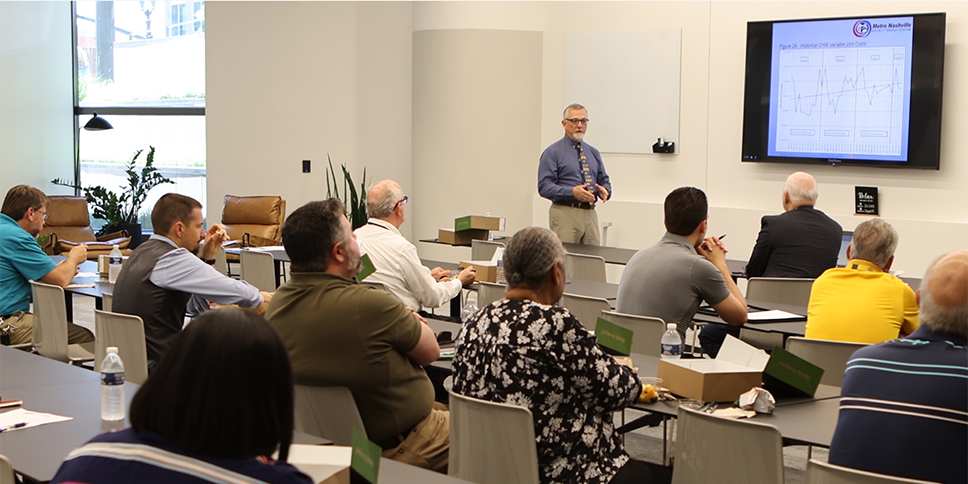Currently there are 42 buildings connected to the Metro-Nashville District Energy System (DES) that utilize chilled water produced at the Energy Generating Facility (EGF) for cooling. Twelve of the buildings are connected via a plate-and-frame heat exchanger while the balance of the customers are directly connected (coupled). Since each customer has a requirement to operate with a specific temperature difference (Delta T), all customers utilize some form of automated control on the chilled water return. Methods of control vary between the buildings, but most use a temperature control valve, variable speed pumps, or a combination of both. Whenever the required Delta-T is not met (based on the metered monthly average Delta-T), the customer is charged a Thermal Inefficiency Fuel Surcharge (TIFS) which is intended to provide the customer an additional incentive to maximize their Delta-T.
Maximizing the building Delta-T has a significant impact on the efficiency of the DES chilled water system and can reduce the energy used within the customer building. With higher customer Delta-T’s, the chillers at the EGF operate more efficiently for any given load thereby reducing the amount of electricity required for each operating chiller. As the chiller efficiency improves, less water is required to be evaporated in the cooling towers which reduces the amount of city water make-up necessary for the system. High Delta-T’s also reduce the volume of chilled water circulated through the system, thus reducing the pumping energy required at the EGF. Customers realize all these reductions in electricity and water since these chilled water costs are directly passed through to the customers.
Achieving a desired Delta-T in each building is essential to customers maximizing their value of being part of the DES. However, numerous factors in each unique building can play a role in achieving the this Delta-T. Thermal Engineering Group (TEG), the Project Administrator, works directly with customers to identify and find solutions to these challenging issues which are not always readily apparent. For example, in most situations with decoupled buildings and coupled buildings where chilled water is recirculated, slowing the speed of the in-building pump via a Variable Speed Drive may actually improve the effectiveness of the cooling system by reducing the chilled water supply temperature to the coils. This lower temperature can increase the amount latent heat rejection at the coils improving the quality of the conditioned air. Reducing pump speeds will reduce electrical consumption due to a decrease in the volume of circulating chilled water, improve the building’s Delta-T and lower energy costs for the building owner and the system. Maximizing the building Delta-T is a “win-win” solution for everyone within the DES.
“Solutions are often a combination of multiple factors and not always obvious. What might appear to be a right adjustment can have little positive influence on the building and may even make things worse,” stated Dan Coyle, President of TEG, “District Energy is a primary focus of our firm. We have been serving in the role for the DES Project Administrator since 2007 and have a collective experience and institutional knowledge base that is essential to the system customers in these situations. Since each building is unique in its design and demands, there are rarely any cookie cutter answers. But in multiple situations, when asked by DES customers for assistance, we have been able to identify adjustments or modifications that help customers increase their Delta-T and improve the quality of their conditioned space. When that happens, everybody wins.”
A detailed article about this subject can be found on at this link. For more information, or to schedule a discussion about this important topic contact Dan Coyle at Thermal Engineering Group at 615-264-2611.







